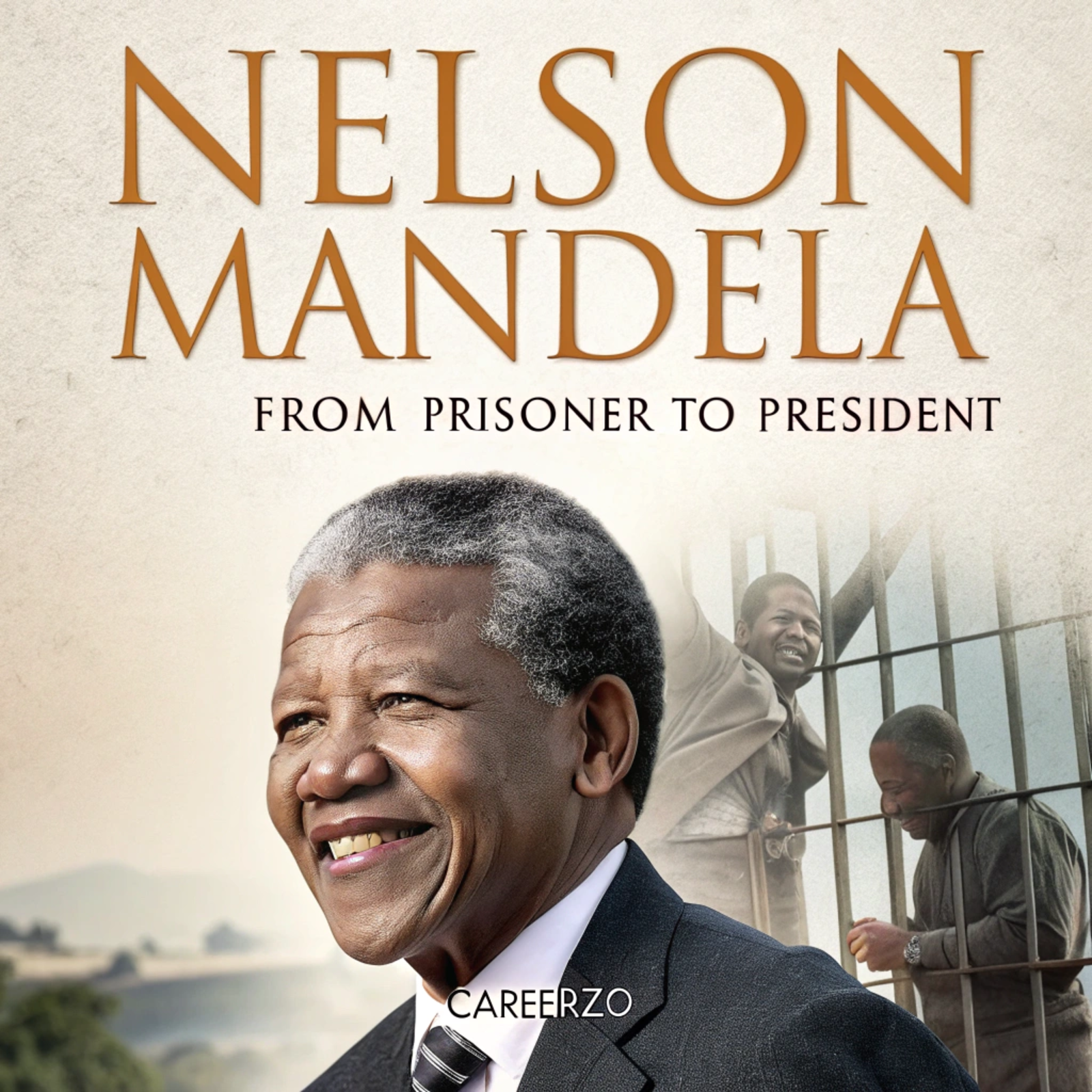Nelson Mandela From Prisoner to President By Careerizo
Ever wondered what it truly takes to transform from society’s most wanted criminal to its most beloved leader? Well, you’re about to discover the jaw-dropping journey of Nelson Mandela a man who spent 27 years behind bars only to emerge as South Africa’s first Black president.
Honestly, if someone told you this story was fiction, you’d probably laugh. But here’s the thing Mandela’s transformation isn’t just inspiring; it’s a masterclass in resilience, forgiveness, and authentic leadership that every modern professional needs to understand.
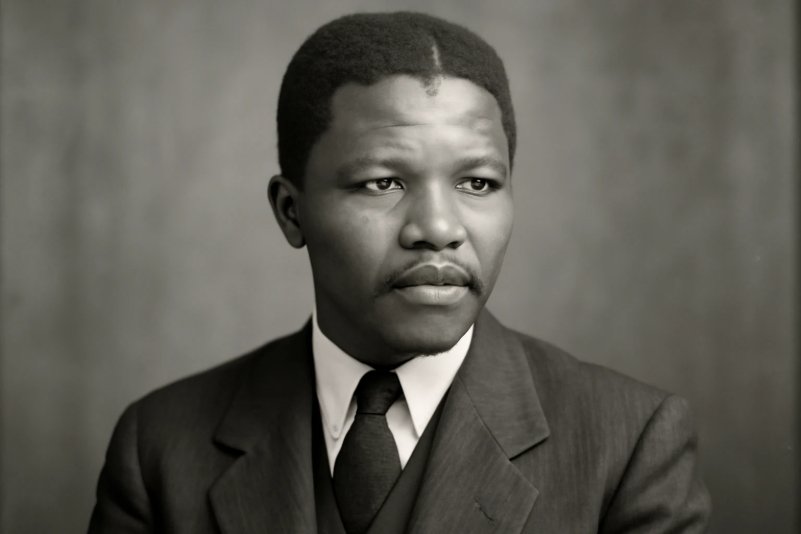
The Making of a Revolutionary: Mandela’s Early Years
Let’s dive right in. Born in 1918 in the rural village of Mvezo, Nelson Rolihlahla Mandela wasn’t destined for greatness or so it seemed. Picture this: a young boy herding cattle, attending a one-room school, and dreaming of becoming a counselor to the royal family.
But life had other plans, didn’t it? By the way, did you know that “Nelson” wasn’t even his birth name? His teacher gave him that English name on his first day of school a common practice that, ironically, would later become synonymous with freedom itself.
From Law Student to Legal Warrior
This is where things start to get interesting.Nelson Mandela signed up to study law at the University of the Witwatersrand in 1943.Imagine being among the few Black students surrounded by white faces, experiencing daily discrimination, yet still persevering with steadfast resolve.
During this period, Nelson Mandela experienced firsthand the brutal realities of apartheid
- Restricted movement through pass laws
- Inferior education designed to limit opportunities
- Economic exploitation that kept Black South Africans impoverished
- Social segregation that dehumanized entire communities
This wasn’t just policy – it was systematic oppression that touched every aspect of daily life.
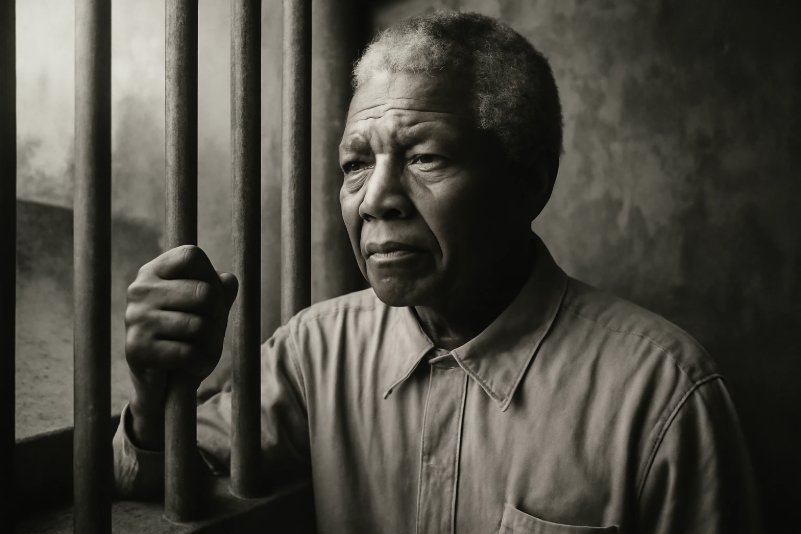
The Price of Resistance: 27 Years That Changed Everything
You know what they say about pressure making diamonds? Well, Nelson Mandela’s 27 years in prison didn’t just create a diamond they forged an unbreakable spirit that would eventually liberate an entire nation.
Life on Robben Island: More Than Just Survival
I want to show you a glimpse of Nelson Mandela’s everyday life from 1964 till 1982.Awaken at 5:30 A.m Breakfast of light porridge Eight hours of backbreaking work beneath the searing African sun in the lime quarry Supper of a slice of bread and weak soup.
But here’s the kicker – instead of breaking him, this routine became his university. Nelson Mandela used every moment to:
- Study and educate himself (earning his law degree through correspondence)
- Mentor younger prisoners and share his knowledge
- Build relationships across racial and political lines
- Develop his philosophy of reconciliation over revenge
Think about it while most of us complain about our Monday morning meetings, this man was literally chiseling away at limestone while simultaneously chiseling away at his own bitterness and resentment.
The Transformation: From Militant to Mediator
Here’s something that’ll blow your mind: Nelson Mandela entered prison as a militant revolutionary ready to use violence for liberation. He emerged as perhaps the greatest advocate for peaceful transition the world has ever seen.
What changed? Let’s be honest it wasn’t some magical transformation. It was a deliberate, conscious choice made daily for nearly three decades.
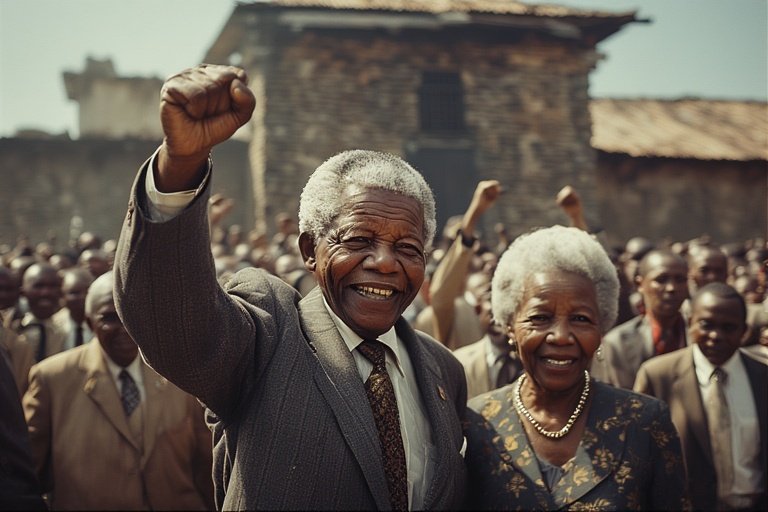
February 11, 1990 The Walk That Shook the World
Picture this moment After 27 years, 6 months, and 6 days, the prison gates opened. The world held its breath as a 71 year old man with silver hair and an unwavering smile walked hand in hand with his wife, Winnie, towards freedom.
But wait there’s more to this story than just a symbolic walk. Nelson Mandela’s first words as a free man weren’t about revenge or bitterness. Instead, he spoke about
- Reconciliation between all South Africans
- Peaceful negotiations to end apartheid
- Unity rather than division
- Building rather than destroying
The Art of Forgiveness Nelson Mandela’s Secret Weapon
Now, here’s where Mandela’s story gets really fascinating. Most people expected him to emerge filled with hatred and thirst for vengeance. Instead, he became the embodiment of forgiveness not because he was weak, but because he understood that forgiveness was the strongest weapon against injustice.
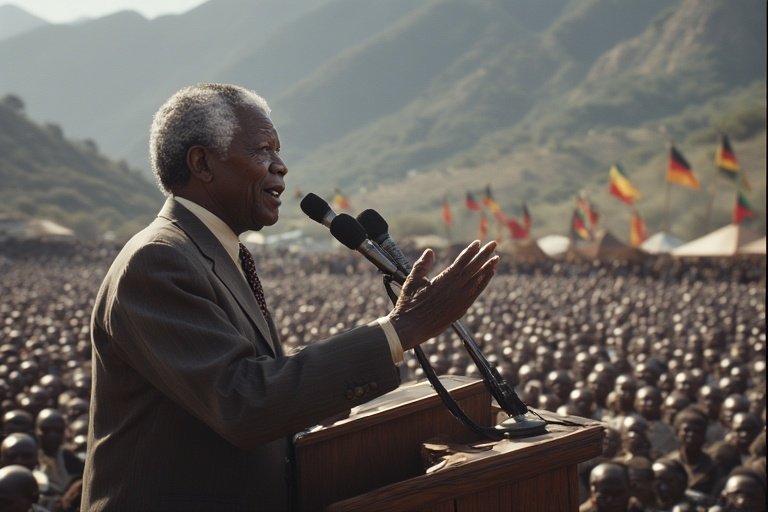
From Prisoner to President: The Ultimate Leadership Lesson
Let’s talk about the elephant in the room how does someone transition from being labeled a terrorist to becoming a president? The answer lies in authentic leadership principles that modern executives and entrepreneurs desperately need to understand.
The Mandela Leadership Formula
Here’s what made Mandela’s leadership so extraordinarily effective
- Vision Over Vengeance
He focused on the South Africa he wanted to create, not the pain of the past
Every decision was measured against the question: “Does this serve our collective future?”
Inclusion Over Exclusion
Even his former captors were invited to participate in the new democracy
He understood that sustainable change requires everyone’s buy-in
1. Vision Over Vengeance
- He focused on the South Africa he wanted to create, not the pain of the past
- Every decision was measured against the question: “Does this serve our collective future?”
2. Inclusion Over Exclusion
- Even his former captors were invited to participate in the new democracy
- He understood that sustainable change requires everyone’s buy-in
3. Patience Over Pressure
- Decades in prison taught him that real change takes time
- He chose strategic timing over impulsive action
4. Sacrifice Over Self-Interest
Serving only one term as president, Mandela voluntarily stepped down.
He always prioritized the requirements of the country over individual strength.
The 1994 Miracle: Democracy Without Civil War
Honestly, most political scientists predicted that South Africa’s transition would be bloody. How do you peacefully transfer power from a white minority government that had oppressed the majority for decades?
Mandela’s approach was genius in its simplicity:
Truth and Reconciliation Commission instead of war crimes tribunals
Government of National Unity that included former oppressors
Rugby World Cup moment that united a divided nation
Personal relationships with former enemies
Mandela’s approach was genius in its simplicity:
- Truth and Reconciliation Commission instead of war crimes tribunals
- Government of National Unity that included former oppressors
- Rugby World Cup moment that united a divided nation
- Personal relationships with former enemies
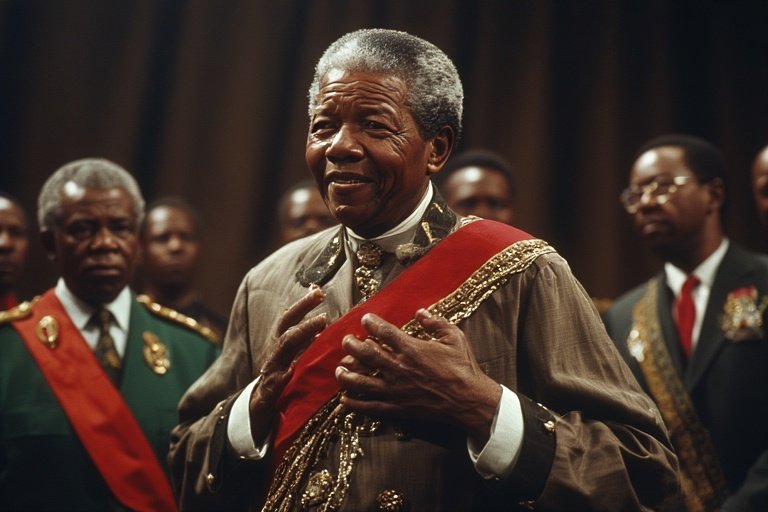
Presidential Years: Leading by Example
May 10, 1994 commencement day.Nelson Mandela, the first Black president of South Africa, raised his right hand at 75 years old and swore the oath.However, what made this time really remarkable was his invitation to honored guests to include his former prison guards.
Can you imagine? The man who had spent nearly three decades locked away was now inviting his captors to celebrate his greatest triumph. That’s not just forgiveness that’s strategic brilliance wrapped in authentic humanity.
The One Term Wonder Why Mandela’s Presidency Was Perfect
Here’s something most people don’t realize Mandela could’ve easily stayed in power for decades. The people loved him. The party supported him. Yet, he chose to serve only one five year term.
Why? Because he understood that true democracy required peaceful transitions of power. By stepping down voluntarily, Mandela established a precedent that strengthened South African democracy for generations to come.
Key Presidential Achievements:
- Peaceful transition to majority rule
- New constitution protecting human rights
- Truth and Reconciliation Commission
- Economic stability during transition
- International recognition and respect
Beyond Politics The Global Icon’s Universal Appeal
Let’s dive into why Mandela’s story resonates far beyond South African borders. His principles aren’t just political they’re deeply human truths that apply to every aspect of life and leadership.
Mandela’s Timeless Leadership Lessons for Modern Professionals
Lesson 1: Your past does not determine your future Consider your career reverses insurmountable Having spent 27 years behind bars, Mandela nevertheless rose to become president at 75 Your present situation is not your final goal.
Lesson 2: True Strength Shows Restraint In our cancel culture era, Mandela’s approach to former enemies offers a masterclass in strategic forgiveness. Sometimes the most powerful thing you can do is choose understanding over condemnation.
Lesson 3: Build Bridges, Don’t Burn Them Mandela never forgot that today’s opponent might be tomorrow’s ally. In business and life, maintaining relationships even during conflict creates opportunities for future collaboration.
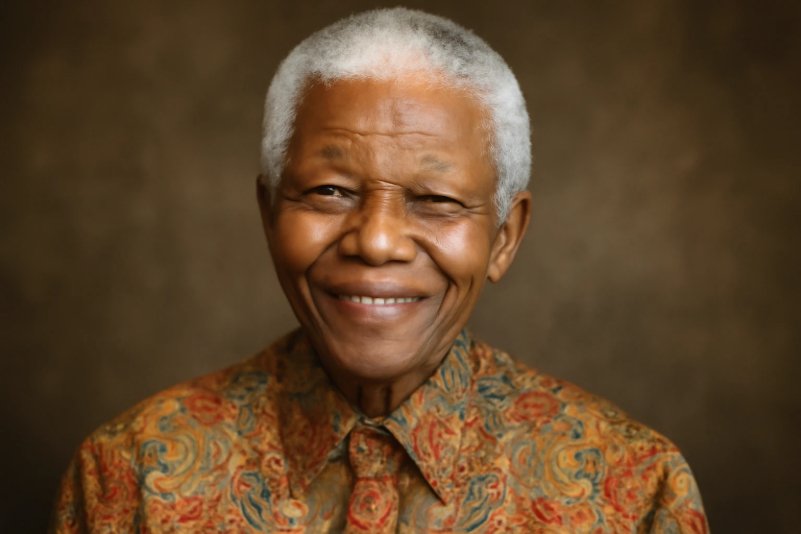
The Mandela Method: Practical Applications for Your Career
Okay, let’s get practical. Here is your practical path: How can you use Mandela’s ideas to your own career path?
The 5 Step Mandela Career Strategy
Set your nonnegotiable values in Step 1.
- Which ideas would you never negotiate?
- How do these ideas direct your everyday choices?
- Faced with hard decisions, what would Mandela do?
Step 2: Turn Setbacks into Setups
View career obstacles as opportunities for growth
Use difficult periods for skill development and reflection
Build resilience through consistent daily practices
Step 3: Exercise strategic forgiveness.
- Avoid grudges against difficult coworkers.
- Separate personal emotions from career goals.
- Concentrate on the opportunities ahead instead of past offenses.
Step 4: Leading Through Service
- Ask how can I assist? Before what’s in it for me?
- Make choices that benefit the group, not just your own.
- Develop your reputation via constant value delivery.
Step 5: Understand When to Retreat
- Know when to move into fresh jobs.
- Teach your replacements rather than hold on to power.
- Depart on your own terms while your legacy is still intact.
FAQs: Everything You Need to Know About Mandela’s Journey
What was Nelson Mandela in prison for?
Mandela was imprisoned for 27 years primarily for his role in planning acts of sabotage against the apartheid government and his membership in the African National Congress (ANC), which was banned at the time.
How did Nelson Mandela ascend to power?
Following his release in 1990, Mandela steered talks to eradicate apartheid Winning 62.65% of the vote, he assumed the presidency in 1994 through South Africa’s first totally democratic elections.
What Made Nelson Mandela such an effective leader?
Mandela’s effectiveness stemmed from his ability to unite opposing groups, his commitment to reconciliation over revenge, his moral authority gained through sacrifice, and his clear vision for a democratic South Africa.
Why did Nelson Mandela only serve one term as president?
Mandela voluntarily stepped down after one term to establish a precedent for peaceful democratic transitions and to allow younger leaders to guide South Africa’s future.
What is Nelson Mandela’s most important legacy?
His greatest legacy is proving that peaceful transition from oppression to democracy is possible through forgiveness, reconciliation, and inclusive leadership.
How can modern leaders apply Mandela’s principles?
Leaders can focus on long term vision over short term gains, practice strategic forgiveness, build inclusive teams, lead through service, and prioritize collective success over personal advancement.
The Mandela Mindset: Your Call to Transformation
Here’s the bottom line Nelson Mandela’s journey from prisoner to president isn’t just a historical curiosity. It’s a blueprint for anyone facing seemingly impossible circumstances and dreaming of transformation.
By the way, if you think your current challenges are tough, remember this Mandela went from breaking rocks in a quarry to breaking barriers in government. From being denied basic human rights to becoming the moral voice of his generation.
Your Next Steps: Accepting the Mandela Method
Ready to implement these guidelines in your own life and profession? Here is your action plan:
Identify your own: “prison” What limitations are you currently facing?
Define your vision: What does your ideal future look like?
Choose your response: Will you react with bitterness or respond with growth?
Build your coalition: Who are your allies and potential collaborators?
Take the first step: What small action can you take today?
For deeper insights, you can read more about Nelson Mandela’s journey on Wikipedia. And if you want practical career tips and motivational guidance, Careerizo is here to help you move forward.

